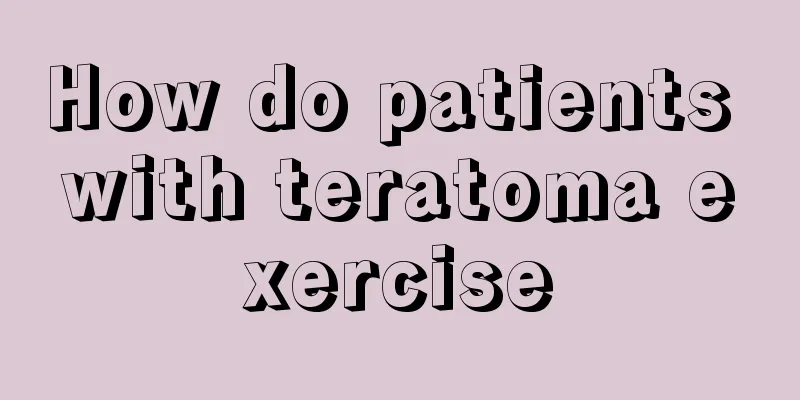What diseases are associated with expiratory dyspnea

|
The happiest thing in life is to have a healthy body. Many people have experienced symptoms such as dyspnea in life. This symptom always makes people feel particularly uncomfortable, but there are many reasons for dyspnea. Only after we understand the cause and diagnose the disease, can we effectively relieve this symptom. Let's learn about the diseases that cause expiratory dyspnea. What diseases are associated with expiratory dyspnea? Pulmonary dyspnea It is caused by respiratory organ diseases and mainly manifests in the following three forms: 1) Inspiratory dyspnea: manifested by wheezing, and depression of the sternum, supraclavicular fossa, and intercostal spaces during inspiration - the three-depression sign. It is common in laryngeal and tracheal stenosis, such as inflammation, edema, foreign bodies and tumors. 2) Expiratory dyspnea: prolonged expiratory phase accompanied by wheezing, seen in bronchial asthma and obstructive pulmonary disease. 3) Mixed dyspnea: seen in pneumonia, pulmonary fibrosis, large pleural effusion, pneumothorax, etc. Cardiac dyspnea Common in cardiogenic pulmonary edema caused by left heart failure, its clinical features are: 1) The patient has a history of severe heart disease. 2) Mixed dyspnea, more obvious in supine position and at night. 3) Medium and small wet gong sounds may be heard at the bottom of the lungs and vary with body position. 4) X-ray examination: abnormal changes in the cardiac shadow; congestion in the hilum of the lung and its vicinity or signs of pulmonary edema. Toxic breathing difficulties Acidosis caused by various reasons can increase carbon dioxide in the blood and decrease pH, stimulate peripheral chemoreceptors or directly excite the respiratory center, increase respiratory ventilation, and manifest as deep and severe dyspnea. Poisoning with respiratory depressants such as morphine and barbiturates can also inhibit the respiratory center, causing shallow and slow breathing. Hematogenous dyspnea Severe anemia can cause shortness of breath due to a decrease in red blood cells and lack of blood oxygen, especially after activity. In case of massive hemorrhage or shock, ischemia and a drop in blood pressure stimulate the respiratory center and cause breathing difficulties. Neuropsychiatric and myopathic dyspnea Severe brain diseases such as encephalitis, cerebrovascular accident, brain tumors, etc. directly affect the respiratory center, causing abnormal respiratory rhythm and leading to dyspnea; myasthenia gravis crisis causes respiratory muscle paralysis, leading to severe dyspnea; in addition, hysteria can also cause dyspnea attacks, which are characterized by significantly fast and shallow breathing. Respiratory alkali poisoning is often accompanied by tetany. After understanding the diseases that cause expiratory dyspnea, we know that dyspnea is generally caused by diseases such as bronchitis and asthma. In fact, if we can maintain good living habits in normal times, we can alleviate this symptom. We must pay attention to a balanced diet, exercise more often, and enhance the body's immunity to reduce illness. |
<<: The role of coronary angiography
>>: What should we pay attention to in the rehabilitation training of triple ankle fracture
Recommend
How to make nail polish dry quickly, 5 tips
We all encounter the same problem when applying n...
Can acne be cured by sweat steaming?
Acne is what we usually call pimples. It can be s...
Why do my hands turn white and peel after soaking in water?
People's hands are covered with skin like the...
What kidney disease requires dialysis
There are many types of kidney disease, and kidne...
How many pills of vitamin E should I take at one time
Vitamin E is an essential nutrient in the human b...
The three most unacceptable fruits after pituitary tumor surgery
The three most taboo fruits after pituitary tumor...
How to maintain fixed dentures
Today's medical industry is constantly improv...
What are the benefits of pineapple tree?
The big tree pineapple is also known as the woode...
How to eat some foods for lung cancer? Three recipes are suitable for lung cancer patients
The treatment of lung cancer is very difficult. M...
Is there any tea that can nourish the stomach?
Nowadays, due to irregular diet and other reasons...
How to cure diseases in winter
Winter is a season that many people are very afra...
What are the dangers of plucking armpit hair
Many women feel troubled by having too much armpi...
What is three fingers above the belly button
The stomach is three fingers above the navel. If ...
How to use ginger to rub your scalp
Ginger is an indispensable ingredient in cooking,...
What are the correction methods for invisible overbite
Overbite is a relatively common dental manifestat...









